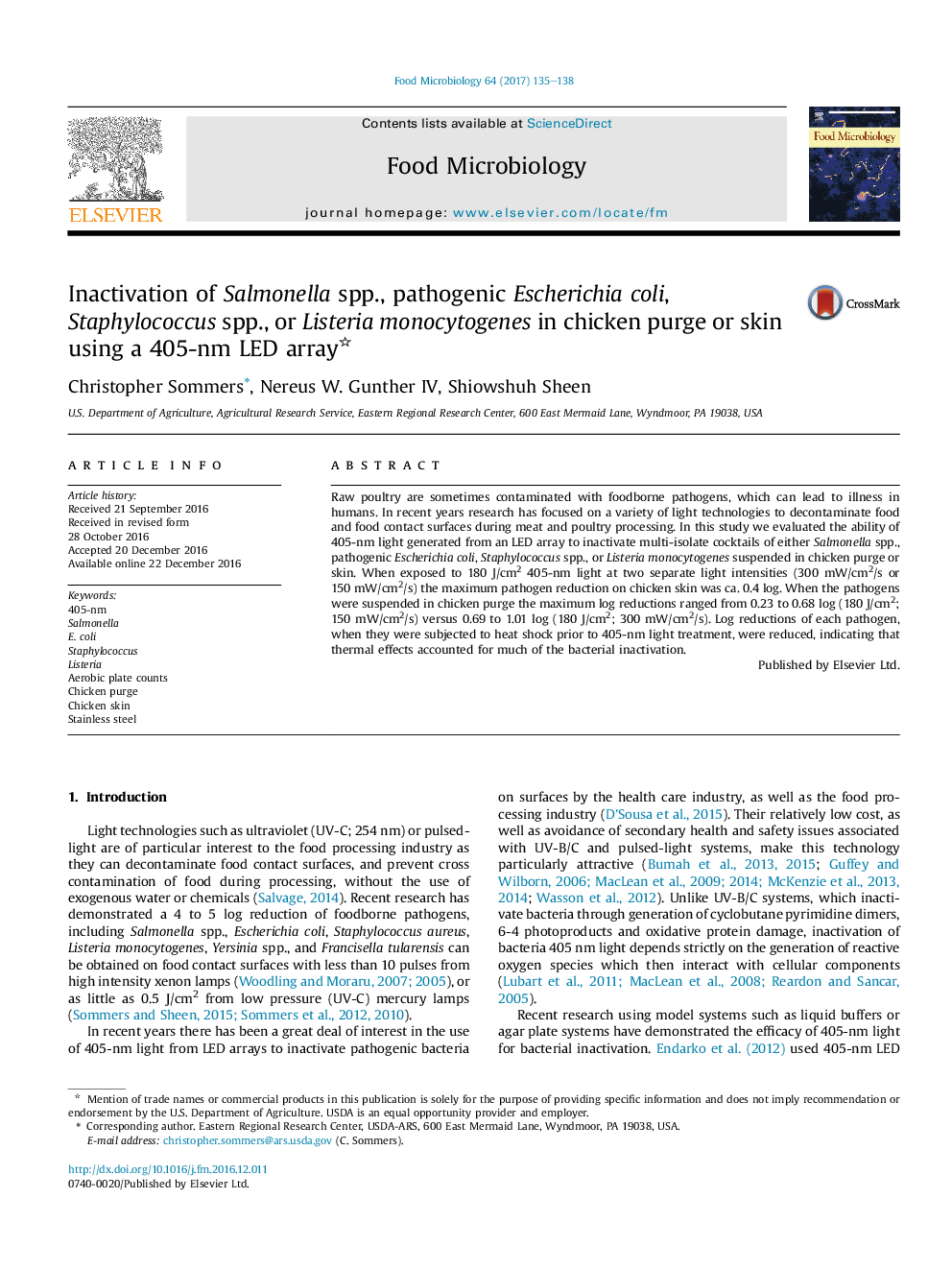| Article ID | Journal | Published Year | Pages | File Type |
|---|---|---|---|---|
| 5740218 | Food Microbiology | 2017 | 4 Pages |
â¢405-nm light (180 J/cm2) reduced ca. 0.4 log of pathogens on chicken skin.â¢405-nm light (180 J/cm2) reduced ca. 1.01 log of pathogens in chicken purge.â¢405-nm light had a limited effect on foodborne pathogens in poultry purge or chicken skin.â¢Reduction of foodborne pathogens was eliminated by heat shock.
Raw poultry are sometimes contaminated with foodborne pathogens, which can lead to illness in humans. In recent years research has focused on a variety of light technologies to decontaminate food and food contact surfaces during meat and poultry processing. In this study we evaluated the ability of 405-nm light generated from an LED array to inactivate multi-isolate cocktails of either Salmonella spp., pathogenic Escherichia coli, Staphylococcus spp., or Listeria monocytogenes suspended in chicken purge or skin. When exposed to 180Â J/cm2 405-nm light at two separate light intensities (300Â mW/cm2/s or 150Â mW/cm2/s) the maximum pathogen reduction on chicken skin was ca. 0.4 log. When the pathogens were suspended in chicken purge the maximum log reductions ranged from 0.23 to 0.68 log (180Â J/cm2; 150Â mW/cm2/s) versus 0.69 to 1.01 log (180Â J/cm2; 300Â mW/cm2/s). Log reductions of each pathogen, when they were subjected to heat shock prior to 405-nm light treatment, were reduced, indicating that thermal effects accounted for much of the bacterial inactivation.
